| Другие имена | Ножи для резки бумаги, Лезвия гильотины для бумаги, Гильотинные ножи, Ножи для гильотинных машин |
|---|---|
| Место происхождения | Китай |
| Приложение | Пластик, Бумага, Совет, Пленка, Фольга, Этикетки, Упаковка, Гофрированный, Журналы, Книги |
| Материал | 65Mn, 9CrSi, Cr12MoV, СКД-11, HSSl |
| Номер модели | ГП-ГБ |
| OEM-сервис | Доступный |
| Условия оплаты | Л/К, Т/Т, западное соединение |
| Упаковка | Картонная коробка, В деревянных ящиках |
| Срок поставки | 7-20 дней |
Поделиться с:
Guillotine blades, also known as guillotine knives or straight cutting blades, are long, straight cutting tools used in guillotine cutters or shearing machines. These machines are designed to make straight, precise cuts across a wide range of materials, most commonly paper, cardstock, and thin boards in the printing and paper converting industries, but also metals, plastics, and other materials in industrial shearing applications. The term “guillotine blades” refers to the straight blade or set of blades that descend in a shearing motion to cut the material held firmly in place.
Guillotine blades are essential tools in various industries for making clean, straight cuts. Key applications include:
The materials used for guillotine blades must be durable, wear-resistant, and capable of maintaining a sharp, straight cutting edge to ensure clean and accurate cuts over extended use. Common materials include:
The blades are precision ground and often hardened and tempered to achieve the optimal balance of sharpness and durability. The bevel angle of the cutting edge is critical for the specific material being cut, ensuring a clean shear without tearing or crushing.
Guillotine blades are typically long and straight, but variations exist in their edge profiles and overall design depending on the application and the material being cut:
The working principle of guillotine blades involves a powerful downward shearing motion against a stationary bed or anvil. The material to be cut is held firmly in place by a clamp, and the sharp, straight blade descends with significant force, cleanly severing the material. The length and thickness of the blade, the angle of the bevel, the force applied, and the rigidity of the machine all contribute to the quality and accuracy of the cut. Proper sharpening and alignment of the guillotine blades are essential for optimal performance and safety.
Добро пожаловать в спрашивайте!
Если вы не нашли нужный вам ножничный нож, мы также можем изготовить его по индивидуальному заказу, см. наш «Пользовательские лезвия» чтобы узнать как!
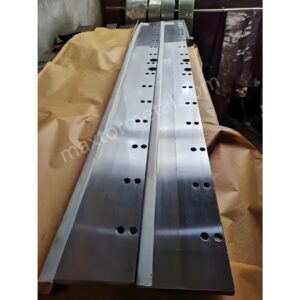
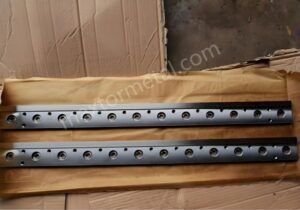

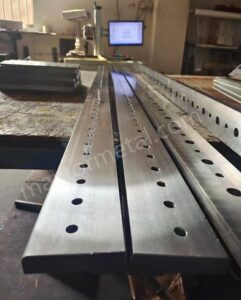
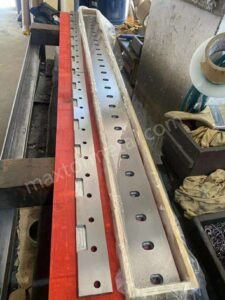
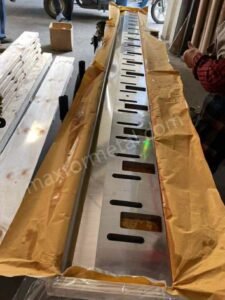
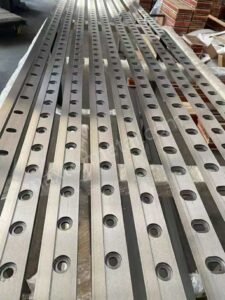
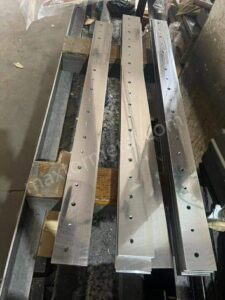
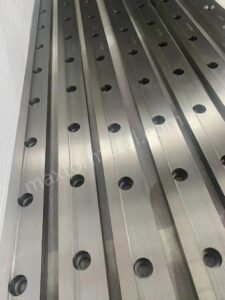
Легко оценить удобство импорта: от транспортировки до таможенного оформления мы берем на себя весь процесс, вам нужно только заплатить НДС и дождаться прибытия товара в компанию.
Мы видели, как его лезвия используются в бесчисленном количестве применений, и готовы реализовать любой проект, который вы нам предложите, обеспечивая точность, долговечность и непревзойденную конкурентоспособную цену.
Если вы предоставите чертежи, эскизы или образцы, мы можем нарисовать и изготовить для вас. Мы также можем помочь в изменении существующих конструкций и спецификаций для улучшения практически любого промышленного применения инструмента. Пожалуйста, свяжитесь с нашей специализированной группой продаж, чтобы обсудить ваши особые требования.
Для контроля качества проводится ряд испытаний и проверок, включая проверку первого изделия, входной контроль материалов и сертификацию материалов, контроль качества в процессе производства, окончательный контроль качества.
Независимо от того, являетесь ли вы импортером, дистрибьютором, оптовиком или конечным потребителем, мы приглашаем вас присоединиться к нам с минимальным минимальным объемом заказа, отсутствием хлопот с запросами и большей свободой при покупке.
Станьте вашим эксклюзивным монитором, регулярно транслирующим каждый важный узел на производственной линии, независимо от того, как далеко он находится, чтобы как можно дальше отслеживать прогресс продукта!
Нанкин Metal Industrial CO., Limited
Промышленный парк Минджуэ, Лишуй, Нанкин, Цзянсу, Китай
Будьте в курсе наших последних новостей.